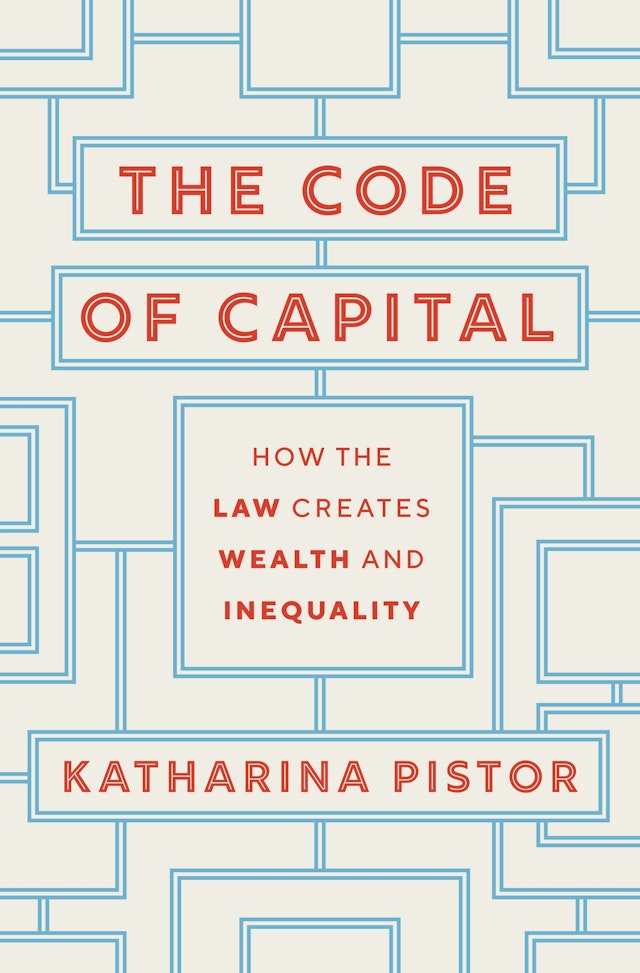Extracted from page 77 of:
The Code of Capital: How the Law Creates Wealth and Inequality
https://press.princeton.edu/books/hardcover/9780691178974/the-code-of-capital
If there is one asset that defines capitalism, it is debt— not any debt, but debt that can be easily transferred from one investor to another, and preferably debt that is convertible into state money at any time on the behest of its holders, the creditors. Convertibility of private debt on demand is typically assumed but is not always an enforceable claim. The logic of a private economy is that you can sell only if you find a willing buyer, that is, a private buyer. If private buyers retreat, demand declines, and asset prices fall, investors who recently thought that they had huge amounts of wealth at their fingertips might lose it in no time. To lock in past gains, investors will try to convert their private assets into state money, the only financial asset that is guaranteed to keep its nominal value. [1] The reason is that, unlike private entities, states do not have a binding survival constraint. They can print money and they have the power to unilaterally impose burdens on their citizens in the form of taxes or austerity measures, thereby ensuring their own survival.
When private parties run out of money, they may request help from their peers, but they cannot force them to deliver. If they fail to garner support, they face extinction; the only alternative is to go to the source of state money: the government or its central bank.
As noted in chapter 1, convertibility is one of the key attributes of capital; its relevance is most apparent in the case of financial assets, in particular, debt instruments. For holders of these assets, convertibility has the same importance that durability had for landowners or major lenders to corporations who sought a stable capital base against which to lend. Investors in tradable instruments are fickle; they are constantly on the move as their holders are out to find yet another profit opportunity. It therefore makes little sense to lock them up behind real or legal shields. But this does not mean that holders of financial assets do not crave certainty; their certainty comes from the ability to convert their assets into cash on demand without a serious loss. The trick is to make these assets look almost like state money, that is, to cloak them in legal modules that enhance the chances that they can be converted into cash on demand.
The history of debt finance can therefore be retold as a story about how claims to future pay have been coded in law to ensure their convertibility into state money on demand, without suffering serious loss. This chapter traces the coding techniques for the most basic forms of debt, the notes and later the bills of exchange that emerged between the twelfth and the seventeenth centuries, all the way to modern- day securitized assets and credit derivatives.
The story also illustrates the shift away from landowners, the privileged holders of property rights who often figured as debtors in the past, to creditors as the asset holders who enjoy the strongest legal protection. Signs for this shift have long been evident, but only after land had been thoroughly dethroned in the late nineteenth century did financial assets come to the fore as a leading source of private wealth. As we shift focus from owners to creditors, and from land to debt, we will encounter the same legal modules that we have seen at play before: contract, property and collateral law, trust, corporate, and bankruptcy law. These legal modules mitigate the risk associated with debt and in doing so have fueled its expansion from one unprecedented height to another— to be followed only too often by equally steep downturns, safe only for the successful intervention of states and their central banks. Huge gains could be made along the way, and losses were often shifted to others.
These losses tend to fall primarily on two groups: The unsecured debtors, that is, creditors who by operation of general bankruptcy rules are last in line to share in the leftovers; and states, or rather their citizens, whose future productivity they commit when bailing out failing entities. In the absence of state backing, debt cycles would draw their natural circles, making and destroying wealth along the way. Many states have smoothed out these cycles by standing by to protect holders of these assets from the abyss, time and again; others that were either unwilling or unable to do so have seen their economies ravaged by debt crises that destroyed wealth and brought economic decline. In addition, they had to cede sovereignty to their creditors, to the International Monetary Fund (IMF), or “the Troika,” comprised of the IMF, the ECB, and the European Commission.
When stepping into the void by offering new credit to borrowers that were shunned by private creditors, or when buying assets from creditors that no longer found any private takers, states have tended to protect assets and asset holders that were critical for the survival of the system and have left the rest to fend for themselves. In so doing, they have helped stabilize finance, but they have also contributed to the massive concentration of wealth in the hands of those at the top of a financial system that is not flat, but deeply hierarchical. [2]
Notes:
1. Morgan Ricks, The Money Problem (Chicago: University of Chicago Press,
2016). See also chapter 1 on this point.
2. On the hierarchy of moneys, see Perry Mehrling, “The Inherent Hierarchy of Money,” in Social Fairness and Economics: Economic Essays in the Spirit of Duncan Foley, ed. Thomas Michl, Armon Rezai, and Lance Taylor (New York: Routledge, 2013), chap. 21.


Nessun commento:
Posta un commento